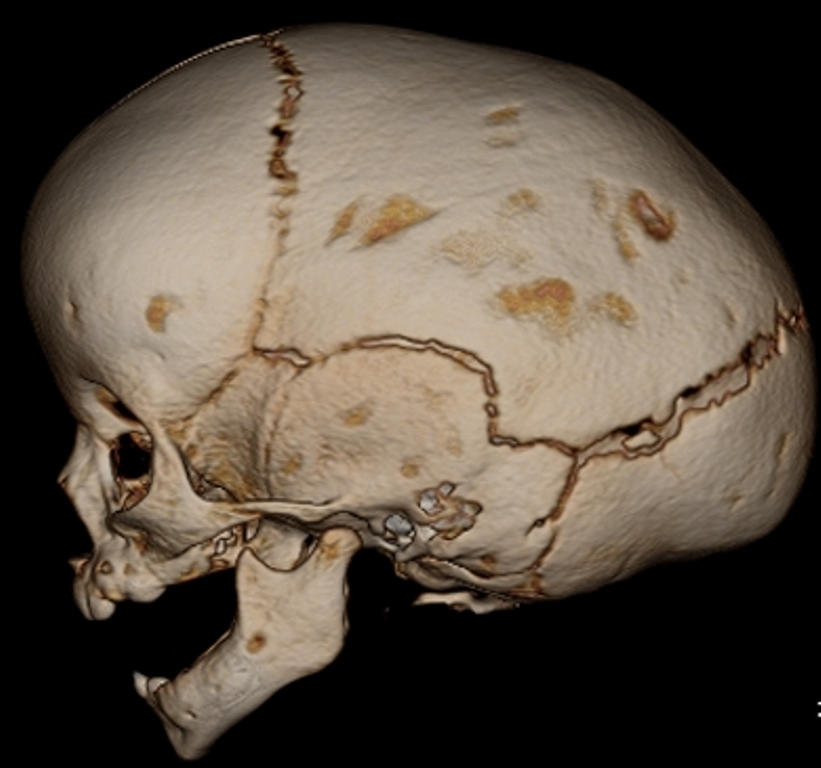Saturday, October 2, 2010 - 8:25 AM
17790
Low Dose Craniofacial CT/ Rapid Access MRI Protocol in Craniosynostosis Patients: Cost Savings and Decreased Radiation Exposure
Introduction: Patients with craniosynostosis often receive computed tomography (CT) scans to assist with diagnosis and treatment. While clinically useful, this information necessitates radiation exposure and produces a healthcare cost.1,2 Previous studies have discussed potential risks associated with ionizing radiation.3,4 A movement exists to limit radiation exposure in children.5 In an attempt to maintain quality of care, while reducing cost and radiation exposure, our institution adopted a new protocol for radiologic examination of craniosynostosis patients.
Purpose: To present and analyze a new radiologic protocol in the management of craniosynostosis patients.
Methods and Materials: At our institution, craniosynostosis patients receive CT scans in the preoperative, immediate postoperative, and long term follow up periods. Cognizant of the inherent risks of radiation exposure in the pediatric population, a pilot study was undertaken to reduce radiation exposure, while maintaining scan quality. The existing protocol for craniofacial CT scans included an average radiation dose of 26.1 mGray (17-39 range). Sequentially, mGray dosing was decreased until a reasonable “low dose” (2.85 mGray) was achieved without a significant denigration in scan quality. Low dosing the CT scan prevented clear brain imaging. Rapid acquisition (RA) MRI was used to rule out structural brain anomalies. To assess scan quality, specific bone and brain morphologic features were examined in 10 low dose CT/RA MRI protocol scans and compared to a retrospective cohort of age matched craniosynostosis patients with traditional protocol CT scans. Three radiologists read these scans, blinded to radiation dose on the CT component.
Results: Comparing specific parameters, low dose CT/RA MRI scans were read as having similar bone/brain detail as traditional protocol. Radiation exposure was decreased 89% to 2.85mGy using the new protocol. There was a cost savings of $1918 per scan compared to the old protocol.
Conclusions: CT scans performed in craniosynostosis patients carry an associated cost and inherent radiation exposure. Modification of a traditional craniofacial CT scan to a low dose CT /RA MRI protocol, brought about a decrease in overall radiation exposure by 89%, while yielding cost savings of 36% per scan. Comparison of new protocol to traditional scans yielded no notable differences in specific brain and bone structural criteria. Thus potentially useful clinical information can be obtained while saving healthcare dollars and radiation exposure to patients with craniosynostosis.
References:
1. Smith-Bindman R, Lipson J, Marcus R, et al. Radiation dose associated with common computed tomography examinations and the associated lifetime attributable risk of cancer. Arch Int Med. 2009;169(22):2078-2086.
2. King M, Kanal K, Relyea-Chew A, et al. Radiation exposure from pediatric head CT: A bi-institutional study. Pediatr Radiol. 2009;39:1059-1065.
3. Brenner D, Hall EJ. Computed tomography- An increasing source of radiation exposure. N Engl J Med. 2007;357:2277-84.
4. Jaffurs D, Denny A. Diagnostic pediatric computed tomographic scans of the head: Actual dosage versus estimated risk. Plast Reconstr Surg. 2009;124:1254-1260.
5. Domeshek L, Mukundan S, Yoshizumi T, Marcus J. Increasing concern regarding computed tomography irradiation in craniofacial surgery. Plast Reconstr Surg. 2009;123:1313-1320.
Old CT protocol image, radiation dose: 32.97 mGray 
Low dose CT protocol image, radiation dose: 2.85 mGray
See more of Cranio/Maxillofacial/Head and Neck Paper (5 mins)
Back to 2010am Complete Scientific Program

